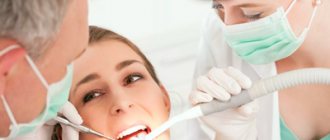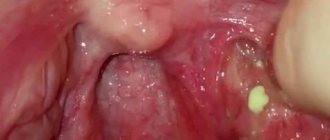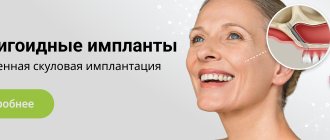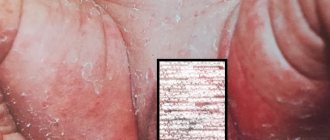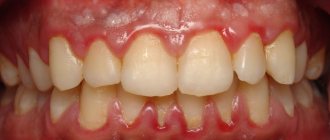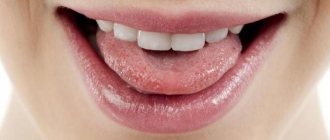Opportunistic infections, including mycoses, represent a pressing problem in modern medicine. Paradoxically, it was precisely the achievements of science that ensured the success of clinical medicine that led to an increase in the number of patients with opportunistic mycoses. In particular, advances in the treatment of a number of oncological and autoimmune diseases (the use of chemotherapy, anti-cytokine therapy, glucocorticosteroids and immunosuppressants) are associated with the emergence of a population of patients with acute and chronic iatrogenic immunodeficiency states. In turn, immunodeficiencies and local disorders of antimicrobial resistance in humans are the basis for the development of opportunistic mycoses, primarily candidiasis. Diagnosis and treatment of candidiasis of the mucous membranes of the digestive tract in some cases are associated with significant difficulties.
Fungi (Latin fungus, Greek mykes) are an independent vast kingdom of eukaryotic microorganisms, including about 90 thousand studied species. Until the end of the 1960s. Fungi were mistakenly classified as members of the plant kingdom. Among fungi, macromycetes and micromycetes are distinguished. The former are visible with the naked eye, the latter - with the help of microscopes. Unicellular (lower fungi, for example, Mucor) and multicellular (higher fungi, for example, Penicillium) forms of micromycetes are known [1].
Yeast-like fungi of the genus Candida are single-celled microorganisms 6–10 microns in size. These micromycetes are dimorphic: under different conditions they form both blastomycetes (bud cells) and pseudomycelia (threads of elongated cells). This morphological feature has, as will be shown below, important clinical significance.
Micromycetes of the genus Candida are characterized by ubiquity - widespread occurrence in the environment. Viable cells of Candida spp. can be found in soil, drinking water, food products, on the skin and mucous membranes of humans and animals. Thus, contact with these micromycetes of a person’s “open systems,” i.e., his skin and mucous membranes, is an ordinary fact.
Intestinal candidiasis. Causes
It is generally accepted that the gastrointestinal tract is the main endogenous reservoir of Candida, from where the subsequent spread of infection throughout the body occurs. Candida albicans belongs to the opportunistic flora and is a component of the normal intestinal microflora. Determination of the presence of Candida albicans in 10x4 degrees in a bacteriological analysis of stool, according to official requirements, is not an indication for making a diagnosis of “intestinal candidiasis,” much less for antifungal therapy. In practice, the clinician has to deal with candidiasis, which is observed in the intestines up to 80% and it is better for Candida to be below the detection level in the analysis (0).
Risk factors for the development of candidiasis infection are varied, they are also caused by various diseases of organs and systems of the body, in which signs of impaired intestinal microflora develop, in particular diabetes mellitus, oncopathology, inflammatory bowel diseases (Crohn's disease and ulcerative colitis), irritable bowel syndrome, anemia , AIDS, decreased immune defense, stress. Therapy for underlying diseases can also contribute to the development of intestinal microbiocenosis disorders and excessive growth of candida - this is the use of cytostatics, immunosuppressants, radiation therapy, antibiotics, and surgical interventions in the treatment.
The physiological periods of a person’s life, neonatality, pregnancy, menopause, old age, and deteriorating environmental conditions that reduce a person’s anti-infective resistance are also important in the occurrence of overgrowth of Candida fungi, which leads to an imbalance between the normal flora and the body’s immune response. (Burova S.A., Kurbatova I.V., 2006). All the reasons that were described above, in which a violation of the microbiocenosis of the gastrointestinal tract develops, can lead to candidiasis. The most significant conditions should be highlighted: gastric surgery, disorders of the secretory and motor functions of the stomach and intestines, colonic diverticulosis, and cirrhosis of the liver.
Poor nutrition and, in particular, steroids contained in food and supplements and food intolerance seem to be important for the development of dysbiosis of the gastrointestinal tract.
Pathogenesis, clinical picture and diagnosis
The development of candidiasis of the digestive tract is characterized by the sequential passage of fungi through the following stages: adhesion, invasion, candidemia and visceral lesions. At the first stage, micromycetes adhere to the epithelial cells of any part of the mucous membrane. Subsequently, defects in the resistance system allow micromycetes to penetrate (invade) the mucous membrane and underlying tissues through transformation into pseudomycelium. Cytopenia is a decisive factor that allows invading fungi to reach the vascular wall, destroy it and circulate in the vascular bed (this stage is called candidemia). In the absence of adequate therapy, candidemia leads to the formation of foci of invasive candidiasis in the visceral organs, more often in the liver and spleen, lungs, and central nervous system.
At first glance, it is paradoxical, but the introduction of fungi of the genus Candida is often observed in areas of the mucous membrane represented by multilayer epithelium (oral cavity, esophagus), and much less often this occurs in relation to single-layer epithelium (stomach, intestines).
In practice, the clinician has to deal primarily with candidiasis, the frequency of which in healthy individuals reaches 25% in the oral cavity, in the intestines - up to 65–80% and significantly exceeds the frequency of the disease. Esophageal candidiasis, for example, occurs in general patients in 1–2% of cases, in patients with type 1 diabetes mellitus in 5–10%, and in patients with AIDS in 15–30% [2].
Symptoms of candidiasis are primarily characterized by the appearance of the so-called. thrush and irritation of the mucous membranes. Typical complaints are burning of the mucous membrane of the tongue and the oropharyngeal cavity, dys, odynophagia, retrosternal discomfort, but a latent course also occurs. Symptoms of esophageal candidiasis can disrupt the act of swallowing, which in turn leads to malnutrition and a significant decrease in quality of life.
The scope of examination for candidiasis of the digestive organs includes the study of anamnesis and clinical picture, assessment of routine clinical tests, endoscopic studies, mycological (cultural, morphological, serological) and immunological tests.
Endoscopic signs of candidiasis are hyperemia and contact vulnerability of the mucous membrane, as well as fibrinous deposits of various locations, configurations and sizes. The “standard” for diagnosing candidiasis of the mucous membranes is the detection of pseudomycelium of Candida spp. during morphological examination of biopsy specimens and scrapings.
In order to detect pseudomycelium, morphological mycological methods are used: cytological - with staining of smears according to Romanovsky-Giemsa, histological - with staining of biopsy specimens with the CHIC reaction.
Thus, taking into account the dimorphism of micromycetes Candida spp. is the key to the differential diagnosis between candidiasis and candidiasis. In modern conditions, the clinician must demand from the morphologist an accurate description of the morphological structures of the fungus, because the detection of individual yeast cells, as a rule, indicates candidiasis, and the detection of pseudomycelium allows confirming the diagnosis of candidiasis.
A disadvantage of morphological methods is their limited sensitivity for endoscopic biopsy. It is known that biopsy forceps make it possible to obtain a miniature fragment of tissue for study and the likelihood of detecting an informative sign with a single biopsy is insufficient.
The cultural mycological method is based on sowing biomaterials of mucous membranes on Sabouraud's medium. The advantage of this method is the possibility of species identification of fungi of the genus Candida and testing the culture for sensitivity to antimycotics. The relevance of such studies is due to
the fact that different species of Candida, in particular C. albicans, C. tropicalis, C. parapsilosis, C. krusei, C. glabrata, etc., have different sensitivities to modern antifungal drugs. Currently, modern laboratories have several diagnostic systems for determining the species of fungi and their sensitivity to antifungal drugs. Species identification and determination of sensitivity to antifungal drugs are based on the use of selective culture media, the study of the nature of sugar utilization by fungi and the enzyme profile of fungi, the dilution method, fluorescent hybridization, etc. (diagnostic systems Candiselect, Auxacolor, Fungiscreen, 60780 Fungitest, etc.). A cultural study of biomaterials of the mucous membranes with determination of the type of pathogen becomes strictly necessary in case of recurrent candidiasis or resistance to standard antimycotic therapy.
The disadvantage of the cultural method is the inability to differentiate candidiasis and candidiasis when studying materials from “open systems”, since mucous membranes can normally be contaminated with fungi of the genus Candida.
The sensitivity and specificity of serological tests for diagnosing esophageal candidiasis (enzyme-linked immunosorbent assay with Candida antigen, specific IgE level, Platelia latexagglutination test) have not yet reached the required accuracy, and their results should be assessed with some caution.
The management plan for patients with esophageal candidiasis must include diagnosis and correction of underlying diseases, other foci of candidal infection, rational antifungal therapy and immunocorrection.
In the clinic of the Scientific Research Institute of Medical Mycology of the St. Petersburg Medical Academy of Postgraduate Education, a patient with candidiasis must undergo a minimum amount of diagnostics of the alleged underlying disease, including: • clarification of the pharmacological history; • clinical blood test; • blood test for HIV infection; • blood test for glucose tolerance; • exclusion of the most common malignant tumors and, in connection with this, radiography of the lungs, fibrogastro, fibrocolonoscopy, additionally for men - ultrasound examination (ultrasound) of the prostate gland, additionally for women - ultrasound examination of the mammary glands and pelvis with consultation of a gynecologist.
Therapeutic measures
Treatment of mucosal candidiasis is based on the use of antifungal drugs. The general principle of action of all antifungal agents is inhibition of the biosynthesis of ergosterol in the cell wall of micromycetes. In general, antifungals used to treat candidiasis can be divided into three groups. The first is polyene antimycotics, which are practically non-resorbable when taken orally. These include amphotericin B, nystatin and natamycin. The second is azole antimycotics, which are relatively well absorbed when taken orally. These include: ketoconazole, fluconazole (most often prescribed for candidiasis), itraconazole, voriconazole, posaconazole. The third group is echinocandins: caspofungin, anidulafungin, micafungin.
The goal of treatment of candidiasis of the mucous membranes of the upper digestive tract is to eliminate symptoms and clinical laboratory signs of the disease, as well as to prevent relapses. A modern revision of the standards for the treatment of candidiasis of the mucous membranes of the upper digestive tract, published in the USA in 2009, contains fundamental changes and additions compared to a similar document of 2004 [3].
Most cases of oropharyngeal candidiasis and esophageal candidiasis are caused by C. albicans either as the only pathogen identified or as part of a mixed infection. However, cases of overt infection caused by species usually resistant to fluconazole, C. glabrata and C. krusei, are becoming increasingly common.
Numerous randomized prospective studies of the course of oropharyngeal candidiasis in patients with AIDS and cancer have been conducted in the USA and Europe; it was noted that the majority of patients respond to therapy with topical antimycotics. However, it has also been found that in patients with AIDS, relapses of candidiasis after therapy with locally acting antimycotics occur faster than after therapy with fluconazole, and resistance to antifungals can appear with all treatment regimens.
It is obvious that treatment with fluconazole and itraconazole in solution is more effective than treatment with ketoconazole and itraconazole capsules. For children aged 5 years and older, the recommended dose of itraconazole solution is 2.5 mg/kg twice daily, and the local effect of the solution may be as important as the systemic effect. In AIDS patients, posaconazole suspension is as effective as fluconazole therapy.
Recurrent candidiasis infection is typical for patients with immunodeficiency, especially for patients with AIDS. To prevent relapses of oropharyngeal candidiasis, long-term maintenance therapy with fluconazole is quite effective. It has been compared in efficacy to intermittent fluconazole in response to disease relapse, and long-term maintenance therapy has been shown to prevent relapse of candidiasis more effectively than intermittent therapy, but is associated with a greater risk of developing resistance.
At the same time, it has been shown that oral therapy with amphotericin B, nystatin and itraconazole capsules is less effective than treatment with fluconazole to prevent relapses of oropharyngeal candidiasis.
According to the recommendations, for the treatment of fluconazole-resistant candidiasis, an itraconazole solution should first be prescribed. It has been shown that at least 64, but not more than 80% of patients respond to such therapy. Posaconazole suspension is effective in approximately 74% of patients with recurrent oropharyngeal or esophageal candidiasis, and voriconazole may be effective in fluconazole-resistant candidiasis. Intravenously administered caspofungin, micafungin, and anidulafungin may be reasonable alternatives to triazole antimycotics. Oral or intravenous amphotericin B may also be effective in some patients.
Immunomodulation with the addition of granulocyte-macrophage colony-stimulating factor and interferon gamma preparations may be useful in recurrent oral candidiasis.
The simultaneous detection of oropharyngeal candidiasis and dysphagia or odynophagia may indicate that the patient has esophageal candidiasis. A trial of fluconazole treatment for such patients with suspected esophageal candidiasis may be a cost-effective alternative to endoscopic examination: most patients with esophageal candidiasis report resolution of complaints within 7 days of starting therapy. In the treatment of esophageal candidiasis, fluconazole is more effective than ketoconazole, itraconazole capsules and flucytosine, and itraconazole solution is comparable in effectiveness to fluconazole. Up to 80% of patients with fluconazole-resistant candidiasis respond to treatment with itraconazole solution. Voriconazole is as effective as fluconazole and is superior in the treatment of fluconazole-resistant candidiasis, although it is associated with more side effects.
The use of echinocandins is characterized by a higher frequency of relapses of candidiasis than after treatment with fluconazole. Fluconazole-resistant candidiasis responds to caspofungin, which has similar efficacy to micafungin and anidulafungin. In patients with AIDS, candidiasis usually becomes recurrent, and long-term maintenance therapy with fluconazole is effective in preventing relapses. In HIV-infected patients, the use of HAART (highly active antiretroviral therapy) is associated with a decrease in the degree of contamination of the mucous membranes with C. albicans fungi and a decrease in the incidence of oropharyngeal candidiasis. Thus, HAART should be used as adjunctive therapy (to the extent possible) in all HIV-infected patients with oropharyngeal candidiasis and esophageal candidiasis.
Chronic candidiasis of the skin and mucous membranes is a rare disease characterized by chronic persistent onychomycosis and damage to the mucous membranes caused by fungi of the genus Candida. Some of these patients suffer from thymoma or autoimmune polyendocrine syndrome type 1. These patients should be given fluconazole as initial therapy. When widespread skin and nail lesions are present, the response to antifungal therapy may be delayed and relapse almost always occurs. Thus, most patients require chronic maintenance antifungal therapy. The development of fluconazole-resistant candidiasis is common. Patients with this form of the disease should be treated with the same therapeutic regimens that are used for fluconazole resistance in AIDS patients.
Treatment of oropharyngeal candidiasis For the treatment of mild cases: irrigation with a solution of clotrimazole at a dose of 10 mg 5 times a day or a suspension of nystatin locally at a concentration of 100 thousand units/ml at a dose of 4-6 ml 4 times a day, or 1-2 lozenges with nystatin ( 200 thousand units each), prescribed 4 times a day for 7–14 days. Note that in the Russian Federation, dosage forms of nystatin in the form of suspensions or lozenges are not registered.
For the treatment of moderate to severe cases of the disease: oral fluconazole 100–200 mg (3 mg/kg) per day for 7–14 days.
For the treatment of fluconazole-resistant forms of the disease: either itraconazole solution at a dose of 200 mg/day or posaconazole suspension at a dose of 400 mg 400 mg twice daily for the first 3 days, and then 400 mg daily for up to 28 days. If these measures fail, voriconazole 200 mg twice daily or 1 ml of amphotericin B oral suspension given at a dose of 100 mg/ml 4 times daily is recommended. Please note that dosage forms of amphotericin B in the form of an oral suspension are not registered in the Russian Federation.
In case of refractory disease, echinocandins or intravenous amphotericin B at a dose of 0.3 mg/kg per day are also recommended. Chronic maintenance therapy is usually necessary for people with AIDS. In these cases, fluconazole is recommended at a dose of 100 mg 3 times a week. HAART is also recommended to prevent recurrence of infection.
For the treatment of oropharyngeal candidiasis associated with dentures, in addition to antifungal therapy, it is recommended to disinfect dentures.
Treatment of esophageal candidiasis
In all cases, treatment with systemically acting antimycotics is required. Local antifungal drugs (nystatin, natamycin, clotrimazole) are not effective. Oral fluconazole is recommended at a dose of 200–400 mg (3–6 mg/kg) per day for 14–21 days. For patients who cannot take oral medications, intravenous fluconazole 400 mg (6 mg/kg) per day or amphotericin B 0.3–0.7 mg/kg per day or echinocandins are recommended. It is acceptable to prescribe a diagnostic trial of antifungal therapy before performing an endoscopic examination (note that this recommendation is typical for the United States, where the cost of an endoscopic examination is significantly higher than the cost of a trial course of antifungal therapy).
For the treatment of fluconazole-resistant forms of the disease, the following are recommended: itraconazole solution at a dose of 200 mg/day, posaconazole suspension at a dose of 400 mg twice a day, or voriconazole 200 mg twice a day, prescribed intravenously or orally for a period of 14–21 days. Acceptable alternatives are micafungin 150 mg/day, or caspofungin 50 mg/day, or anidulafungin 200 mg/day, or amphotericin B 0.3–0.7 mg/kg/day.
For the treatment of recurrent esophageal candidiasis, fluconazole is recommended at a dose of 100–200 mg three times a week. HAART is recommended to prevent recurrence of infection in AIDS patients.
In general, the success of treatment of mucosal candidiasis depends not only on adequate antifungal therapy, but also on the success of correction of the underlying disease.
Intestinal candidiasis. Indications for examination
Indications for examination of the gastrointestinal tract to exclude fungal infection should be the following:
- the presence of 2 risk factors for the possible occurrence of candidiasis,
- double superficial colonization of candida,
- the presence of reasons that can lead to disruption of the microflora of the gastrointestinal tract with excessive growth of fungi of the genus Candida.
- febrile conditions of unknown origin, resistant to antibiotic therapy,
- skin and allergic diseases, because Candida is a trigger for allergic diseases and a factor favoring their development.
Algorithm for diagnosing intestinal microflora disorders with overgrowth of Candida flbicans:
- Analysis of medical history, identification of risk factors,
- analysis of clinical data,
- microbiological and gas chromatographic methods for studying disorders of the microflora of the intestinal tract (various biological environments),
- smears - impressions from the mucous membranes of the mouth and esophagus,
- if systemic candidiasis is suspected, it is necessary to culture blood and biological fluids and tissues for the presence of a fungal infection,
- serological diagnosis and assessment of the effectiveness of treatment based on the levels of antibodies to candida,
- inflammatory markers (lysozyme, a-antitrypsin, elastase),
- secretory immunoglobulin A, which allows assessing the degree of activity of the intestinal-associated immune system,
- immunological status (screening) level 1.
All laboratory data should be assessed and analyzed in conjunction with the patient's current clinical situation.
Causes of candidiasis
Conventionally, the disease can be divided into childhood and adult. Infantile candidiasis can be transmitted during childbirth, by passing through infected mucous membranes of the mother, during feeding, and through everyday objects.
Due to the fact that children's immunity is poorly developed and largely depends on the mother, it is important to pay enough attention to one's own hygiene and the cleanliness of the space surrounding the child.
Adult candidiasis most often develops when the immune system is weakened, but the cause may be in factors that give impetus to the development of the disease.
Factors contributing to the development of candidiasis:
- External factors - temperature changes, humidity, skin damage, harmful environmental factors, chemical influences, leaching of one’s own microflora;
- Internal factors - metabolic disorders, non-inflammatory endocrine diseases, courses of treatment with hormonal drugs, taking hormonal contraceptives;
- Changes in the virulent properties of a fungal organism, tilting its qualities towards pathogenic ones.
Doctors note that candidiasis often occurs unnoticed by the patient, in a mild form. The body itself is able to cope with the fungus, and everything returns to normal quite quickly. However, if you notice symptoms of candidiasis, immediately contact GMS Clinic specialists to receive qualified treatment. We can provide the necessary and timely assistance to your immune system.
There are superficial and systemic candidiasis. Let's look at all types in more detail and analyze the systems of each type of candidiasis.
Intestinal candidiasis. Symptoms
Disturbances of intestinal microbiocenosis with excessive growth of fungi of the genus Candida or candidal dysbacteriosis are clinically manifested by fermentative dyspepsia, abdominal pain, more in the sigmoid region, flatulence, frequent abundant foamy loose stools with mucus are noted up to 6-10 times a day, accompanied by disturbances in vitamin metabolism, low-grade fever fever, severe weakness, headache. Symptoms of damage to the mucous membranes in the form of stomatitis, glossitis, and vulvovaginal thrush are often observed. Fungal infection sharply reduces immunity, which leads to a deeper development of visceral candidomycosis with damage to the upper respiratory tract, lungs, genitourinary and digestive systems. In the blood - moderate leukocytosis, accelerated ESR, with sigmoidoscopy - catarrhal hemorrhagic proctosigmoiditis.
Indications for therapy are subject to clinical, microbiological, serological or histological confirmation of candidal infection, detection of candida with clinical manifestations from two or more surfaces of fungal colonization.
Symptoms of thrush in infants
If you suspect your baby has thrush, you should visit your pediatrician to confirm the diagnosis and receive treatment recommendations.
Here's how thrush manifests itself in a baby:
- Difficulty feeding.
One of the first signs you may notice is that your baby acts restless during feeding, as if he is in pain or uncomfortable.
- White spots.
The spots resemble curdled milk and can appear on the tongue, lips, gums and roof of the mouth. Try to wipe them gently - if the stains do not go away this way, it may be thrush. If you don't look closely, these spots are not so noticeable, so make it a habit to look into your baby's mouth from time to time.
- Cracks in the corners of the mouth.
Another possible sign of thrush in a child's mouth.
- Mom's symptoms.
If you are breastfeeding and your nipples appear cracked, inflamed, there is a burning sensation, or you feel shooting pain in your nipples or breasts, these may be signs of thrush. Thrush can be transmitted to the mother from the baby during feeding. Later in this article we talk about how to continue breastfeeding if you have thrush.
Localization of Candida
It should be noted that Candida primarily affects the stratified squamous epithelium of the oral cavity and esophagus and, less often, the single-layer cylindrical epithelium of the intestine. As a result, Candida fungi cause invasive lesions in the upper gastrointestinal tract and colonization (adhesion) in the areas below the stomach. At the same time, clinical symptoms discussed above as signs of non-invasive candidiasis may appear in the intestine, even at the adhesion stage. (Burova S.A., 2006). Consequently, among all localizations of candidiasis of the digestive tract, oropharyngeal candidiasis comes first, followed by candidal esophagitis, gastric candidiasis (often it can be suspected with ineffective Helicobacter pylori therapy and prolonged healing of the ulcer), intestinal candidiasis, which must be differentiated from pseudomembranous colitis caused by Clostridium difficile and acute process in the intestines caused by rotoviruses and Escherichia coli.
Risk factors for mucosal candidiasis
Defects in the antifungal resistance system briefly described above are factors contributing to the occurrence of candidiasis, or so-called. risk factors. Risk groups for the development of candidiasis of the digestive tract are presented below: • physiological immunodeficiencies (early childhood, old age, pregnancy); • genetically determined immunodeficiencies (for example, selective IgA deficiency); • iatrogenic immunodeficiencies – (for example, the consequences of treatment with glucocorticosteroids, immunosuppressants, anticytokine, radiation and polychemotherapy); • diseases of the endocrine system (for example, diabetes mellitus, autoimmune polyendocrine syndrome, hypothyroidism); • dysbiosis of mucous membranes after antibiotic therapy; • AIDS; • chronic “debilitating” diseases (for example, cirrhosis of the liver); • nutritional status disorders (for example, starvation and vitamin deficiencies).
In these groups, candidiasis is detected more often than usual. Note that sometimes the clear cause of the violation of antifungal resistance cannot be determined.
Intestinal candidiasis. Therapy
Therapeutic approaches to the treatment of gastrointestinal dysbiosis with overgrowth of Candida fungi include the following:
- A balanced diet excluding sugar and the consumption of complex carbohydrates, foods with prebiotic properties, and probiotic foods.
- Antifungal drugs.
2.1.Polyene antibiotics (nystatin, natamycin, levorin).
- Nystatin is most appropriate to use in the presence of candida in the esophagus, stomach and is practically ineffective when candida is localized in the intestine, which makes it also not effective when administered prophylactically along with antibiotic treatment.
- Pimafucin (natamycin) is the most effective drug for overgrowth of Candida in the intestines. The drug has an antifungal (fungicidal) effect. Interacts with sterols in fungal cell membranes, disrupting their structure and function and causing their death. Active against many pathogenic yeast fungi, especially Candida albicans. No resistance to natamycin was observed. For intestinal candidiasis, 1 tablet is prescribed. 4 times a day after meals for 7-10 days.
2.2. Triazole derivatives (flucanazole, Diflazon, Diflucan, Mikosist, Flucostat, rumicosis, intraconazole, terbizil, etc.), caspofungin derivatives - Cancidas (for administration of the drug), Noxafil (posaconazole) suspension for oral administration.
2.3. MPH (copper derivative of chlorophyll) is a plant antiseptic from brown algae, a natural immunomodulator due to stimulation of phagocytosis and the activity of copper cations, enhanced by the influence of alcohol, has a bactericidal effect against staphylococci, streptococci, pneumococci, fungi, putrefactive bacteria and E. coli and an antiviral effect. MPH protects and stimulates hematopoiesis, the anti-inflammatory effect is due to an excellent complex of microelements. Prescribed by a doctor orally, 1 drop per 5 kg of body weight daily in a small amount of water. The course of treatment is 30 days,
2.4. Citrosept is a herbal antimicrobial agent made from grapefruit seed extract, which has a bactericidal effect, including. and against fungi of the genus Candida and Helicobacteriosis of the stomach, promotes the absorption of vitamin C, contains bioflavonoids that strengthen the vascular wall of capillaries and prevent blood clots and cholesterol plaques, stimulates the body's natural resistance. It is prescribed as drops diluted in water or juice in different dosage regimens depending on the disease.
2.5. Self-eliminating bacillary preparations (B subtilis, L.bulgaricus) - Flonivin-IS, Baktisubtil, Sporobacterin, biosporin, Baktisporin, Gastrofarm, etc.
2.6. Saccharomyces boulardi - Enterol, 1 capsule contains 250 mg Saccharomyces boulardi, suppresses the growth of opportunistic flora and fungi Candida Krusei, Candida pseudotropical
2.7. Probiotics – lactose-containing preparations (Lactobacterin, Gastrofarm, Primadophyllus, Acidophyllus, Narine, etc.)
- Enterosorbents.
- Hepatoprotectors (Heptral, Hofitol, Karsil, milk thistle preparations, Floravit, etc.)
- Immunomodulatory drugs (Kipferon, Polyoxidonium, Dopolan, Marispan, etc.)
Intestinal candidiasis. Prolonged treatment
The duration of treatment is at least 6 weeks, and then prolonged pulse therapy in short courses with individual selection of drugs for 6 months, but observing the principles of prolonged treatment of gastrointestinal dysbiosis with overgrowth of Candida fungi.
- Rational nutrition continues mainly with the limitation of sugar-containing foods and dishes.
- Repeated courses of citrosept.
- Lactose-containing probiotics 10 days each month.
- Immunomodulatory drugs (repeated courses after 3 months)
- Hepatoprotectors – 2 courses over 6 months.
Assessment of the treatment effect according to the clinical and laboratory data discussed above, during treatment and after 6 months.
